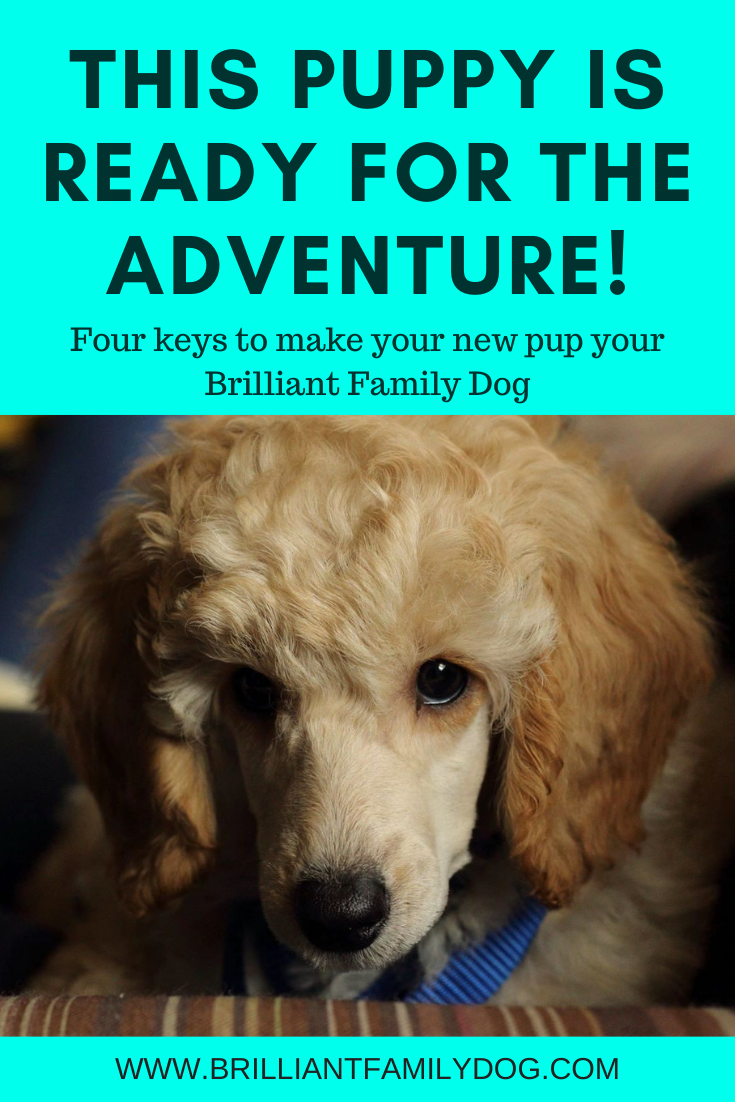I get frequent requests for help from folk who got a pandemic puppy without understanding the significance of the puppy socialisation period - which is from 3 to about 15 weeks.
It’s in this time that the dog’s brain forms its ideas about the world around it.
And it’s why a proper understanding of this is critical to your future life together with your dog.
See our post with a free Socialisation Guide at https://www.brilliantfamilydog.com/blog/our-familys-always-had-dogs-why-is-this-one-so-difficult
You see, what your very young puppy experiences in those critical first weeks will set the tone for how he sees the world for ever. If he enjoys children in this period for example, he’ll carry on enjoying them. If he gets to meet other (carefully chosen) dogs and the meeting goes well, he’ll adjust much better to meeting strange dogs of all shapes and sizes in the future.
It doesn’t mean he’ll breeze through the world with never a care - but it does ensure he’s getting the best start possible.
Same goes for noisy kitchen pans, car rides, train journeys, sheep, visits to the shops, wobbly or uneven surfaces, strange objects, loud noises, sparkly or shiny things … and so on.
Everything your puppy is likely to meet in his life he should be exposed to in a gentle manner at whatever distance is appropriate not to evoke a fear response - in those first few weeks.
So you can see that when you get a puppy, you have your work cut out to beat that deadline of 14-16 weeks of age!
And it’s why the best age to get a puppy is 8 weeks, as by then he’s experienced a couple of weeks in the litter with his littermates once the dam loses interest, and still has plenty of time to do his learning.
What if that time was missed?
It’s not your fault if you didn’t know this and the breeder didn’t know enough to tell you how to handle your new dog! (This underlines the importance of sourcing your puppy carefully - see Choosing your Puppy 1, 2, and 3
So if that time of getting out and about was missed because of lockdown restrictions you are now stuck with a dog who may be fearful or reactive to many things he should be able to take in his stride.
(Actually, socialisation in lockdown was possible within the law - if you’re determined enough anything is possible!)
But here you are, with a dog who is fearful. So what do you do?
First off, understand that you can never replicate that period in a puppy’s brain development. That’s closed. Over.
But you can do lots to help your dog adjust!
Your first consideration is to ensure you don’t overload your dog, overface him with what he is confronted with.
Fewer walks which are comfortable and enjoyable are hugely preferable to daily walks through fire and brimstone!
Work out exactly what upsets him, and make sure you don’t encounter those things at all for now, if humanly possible. This may mean driving to quiet places for walks.
Whether it’s chasing bikes that is the problem, or lunging at people or dogs, then you need to embark on a desensitisation and counterconditioning program (that just means changing his emotional response so he no longer needs to try and defend himself against them).
How to do this? We can show you, step by step, in the Brilliant Family Dog Academy.
This may be absolutely enough for you to see how you can manage walks and improve life for both of you.
Need more specific help?
Your dog is losing his mind when he encounters these things, appearing aggressive and dangerous? Check out From Growly Dog to Confident Dog where I and my experienced team of trainers will guide you through the changes you will make so you can both enjoy your time together - in the company of those who have succeeded and will cheer you on!
And for some starter lessons and an introduction to these programs, here’s where you go:
You can check out the lessons and talk to us in the chat. We’d love to help you change all this!
As I said, in the strange and heady times of the pandemic it may not have been your fault that you were unprepared how to handle your new dog.
But getting things put right now is down to you . . .
Your dog can’t do it alone.







